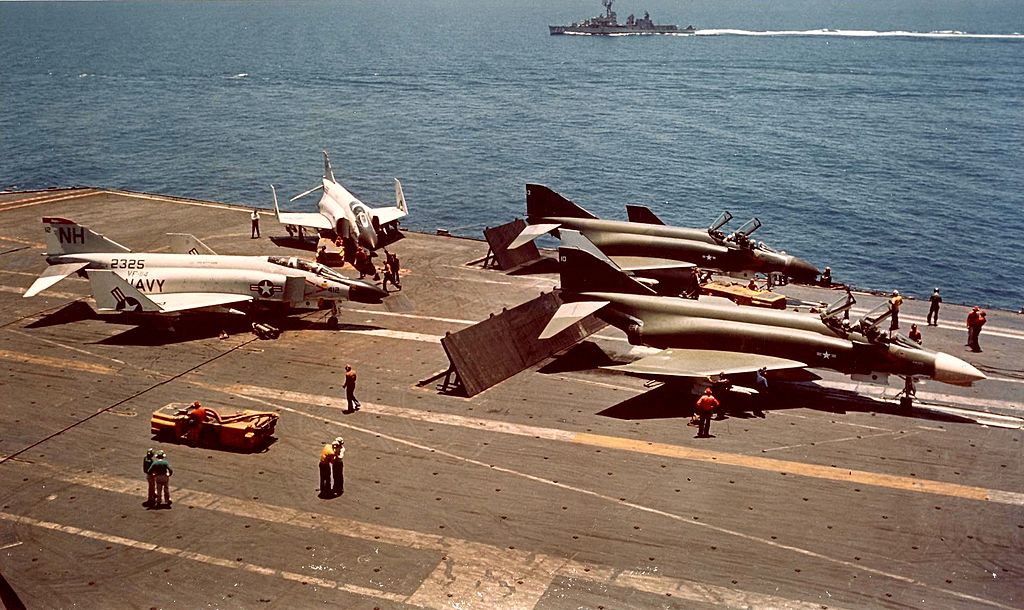The 12 F-4G aircraft of the U.S. Navy were to test a new tactical camouflage for aircraft that were boarded in 1966
Twelve F-4Bs were removed from the McDonnell production line in March 1963 so that special equipment could be added.
With these Phantoms, the brand-new AN/ASW-21 air-to-ground data link was being tested. The No. 1 fuselage fuel cell was replaced directly aft of the rear cockpit by the new communication system and an approach power compensator. Hands-off carrier landings were possible thanks to the AN/ASW-21 data link communication system, approach power compensator, shipboard AN/SPN-10 radar, and AN/USC-1 data connection. To create a larger radar target so that the AN/SPN-10 ship-borne radar could follow the F-4 during automatic landings, a radar reflector had to be mounted to the nose. The radar reflector was initially fastened to the nose gear door, but in production models, it was retracted into a space beneath the nose, just in front of the landing gear.

The twelve modified planes were given the new designation F-4G. BuNos 150481, 150484, 150487, 150489, 150492, 150625, 150629, 150633, 150636, 150639, 150642, and 150645 were assigned to them as their serial numbers. On March 20, 1963, the first of these (150481) took flight.
The only modifications to a conventional F-4B airframe were the data link system and approach power compensator.
The F-4Gs were assigned to VF-213 Black Lions, which had been deployed to Vietnam with Carrier Air Wing 11 (CVW-11) aboard the aircraft carrier USS Kitty Hawk (CVA-63) from 19 October 1965 to 13 June 1966, according to Larry Davis’ book F-4 Phantom II In Action. F-4G 150645 was lost over North Vietnam while on deployment.

The 12 F-4Gs were employed by the service in 1966 to test a brand-new tactical camouflage for Navy aircraft. The undersurfaces remained White, while the upper surfaces were painted entirely in either 34079 or 34102 Green, or a combination of the two. Other aircraft types, such as A-1s and A-6s, were also tested with the new camouflage colors. The U.S. Navy determined that camouflage paint did not significantly conceal the aircraft and was actually detrimental when trying to maneuver an aircraft under the carrier deck at night. Up until the 1970s, Naval aircraft would continue to be painted in the usual scheme of 36440 Gull Gray on the upper surface and Gloss White on the undersides and control surfaces.
The F-4Gs were eventually brought back to the United States and modified to F-4B specifications. The F-4G name was deleted by the U.S. Navy, but the AN/ASW-21 data connection system became a regular feature of the F-4J. Later, when F-4Es were converted into “Wild Weasels” by the U.S. Air Force (USAF), the “F-4G” designation was once more employed.

Photo by U.S. Navy

